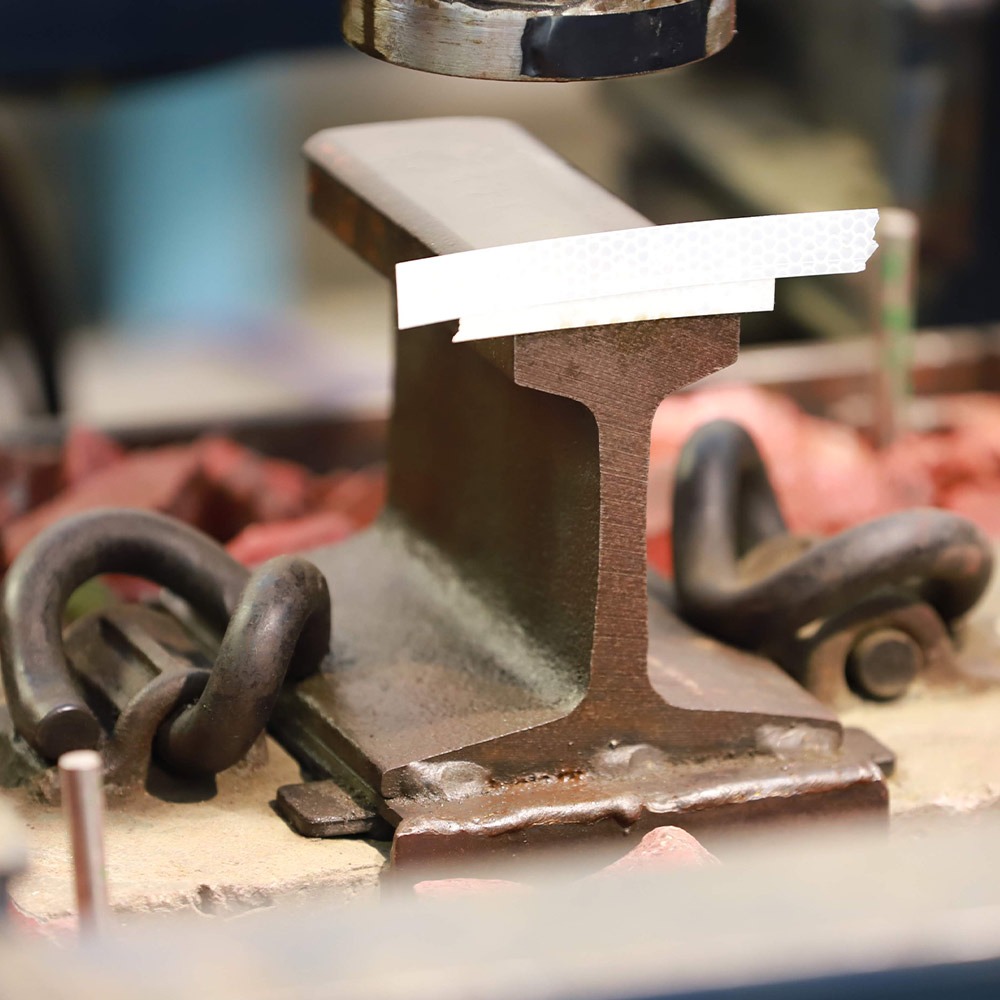11 Jun Materials and Manufacturing | Application of geogrids for minimising track deformation and degradation under high frequency cyclic and heavy haul loading
Materials and Manufacturing
Application of geogrids for minimising track deformation and degradation under high frequency cyclic and heavy haul loading
Global Synthetics (Amir Shahkolahi) / Foundation QA / University of Wollongong (Buddhima Indraratna)

Research summary
This project investigated the benefit of geogrid materials underneath the rail ballast. The ballast, made of crushed rock, can subside and degrade through constant use, so adding geogrid underneath may provide for stabilisation of the ballast that requires less maintenance. This research involved testing the performance of the geogrid by simulating rail loading and vibration in the lab.
Start/end date
22 June 2017 to 31 March 2020
Total contracted budget (including in-kind)
$1,724,516
Key achievements
- A series of large-scale tests of the rail ballast with and without geogrid reinforcement under cyclic loading conditions were carried out to quantify the benefits of including geogrids.
- Test results verified that geogrids and geogrid composites can be used successfully to reduce the breakage and settlement of the ballast and rail track.
- Modelling was also conducted so that different geogrid properties could be examined, in future allowing manufacturers of geogrid materials to experiment with different materials and geometries.
- The team were able to provide data and reports to assist rail engineers in design the incorporation of geogrids into railway construction.
Publications
Ferreira, F., Indraratna, B. and Shahkolahi, A. (2018). Behaviour of geogridreinforced ballast under impact loading conditions, 4th International Conference on Railway Technology: Research, Development and Maintenance, Barcelona, Spain, September 2018.
Indraratna, B., Ferreira, F., Qi, Y. and Sun, Q. (2018). The role of energy absorbing materials in heavy haul rail for minimising track degradation, 4th International Conference on Railway Technology: Research, Development and Maintenance, Barcelona, Spain, September 2018.
Indraratna, B., Ngo, N. Qi, Y, and Rujikiatkamjorn, C. (2020). Track Geomechanics for Future Railways: Use of Artificial Inclusions. ICTG2020 – 4th International Conference on Transportation Geotechnics. Chicago, USA.
Indraratna, B., Qi, Y., Jayasuriya C., Heitor A. and Navaratnarajah, S. Use of rubber tyre elements in track stabilization. Invited keynote paper for 15th International Conference on Geotechnical Engineering, 2019. Lahore, Pakistan.
Jayasuriya, C., Indraratna, B. and Rujikiatkarmjorn, C. 2020. Application of elastic inclusions to improve ballasted track performances. Geo-Congress, Minnesota, USA.
Jayasuriya,C., Indraratna, B., Rujikiatkamjom, C. and Navaratnaraja, S. (2019). Application of elastic inclusions to improve ballasted track performances. Geo-Congress 2020
Ngo, N., Indraratna, B. and Ferreira, F. (2018). Modelling of geogrid-reinforced ballast under direct shear and impact loading, 11th International Conference on Geosynthetics, Seoul, Korea, September 2018.


